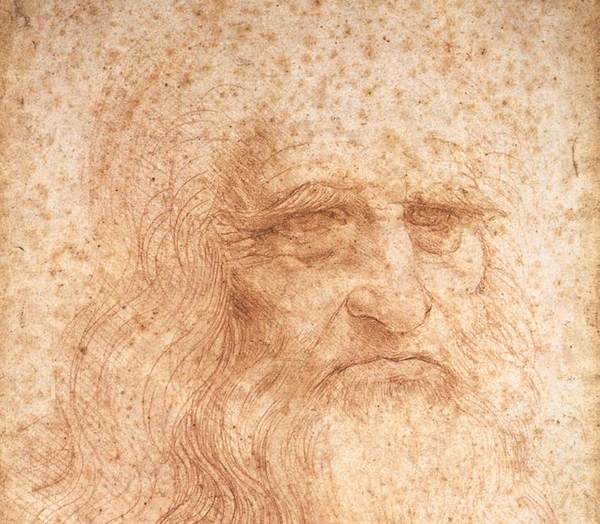Art World
Scientists Classify Fungi Destroying Leonardo Da Vinci’s Priceless Portrait
With newfound knowledge, the work could soon be saved.

With newfound knowledge, the work could soon be saved.

Hili Perlson

A drawing in red chalk believed to be Leonardo da Vinci’s self-portrait from ca. 1512 is one of the most prominent holdings in Turin’s Biblioteca Reale (Royal Library). But besides its masterful execution, there’s another feature of the priceless Renaissance work that has left art conservators scratching their heads for years: The reddish-brown imperfections marring the work, known as “foxing.”
Until recently, researchers could not specify whether this foxing was caused by a chemical reaction or a biological one, and refrained from making any attempts to restore the priceless artwork, as working without a clear identification of the culprit could lead to even more damage, Discover magazine reports.
A new study suggests the spotting is caused by both: A combination of chemical and biological processes which allowed fungus to thrive on the paper. The groundbreaking research, led by Guadalupe Pinar at the University of Natural Resources and Life Sciences in Vienna, may hold the key to the drawing’s possible restoration.
The scientists’ findings, published in December 2015 and which can be read online, point to prominent fungal involvement in the deterioration. The fungal communities found in the portrait stem from a DNA probe and even include one previously uncharacterized species.
However, Pinar suggests that the substantial biological involvement was enabled by a chemical reaction on the paper to dust-borne iron particles. These particles created points of damage, which were then inhabited by fungal organisms, which ultimately created the spots over centuries.
According to Discover, the drawing nearly escaped irreparable damage when, in 1987, a group of researcher suggested to soak the da Vinci portrait in ethylene oxide. While modern technology can offer clearer answers using non-intrusive methods, the treatment plans are still a work in progress.
Nevertheless, now that the culprit may have been named, efforts will be put into place to save the da Vinci drawing from disappearing under a cloud of mold.